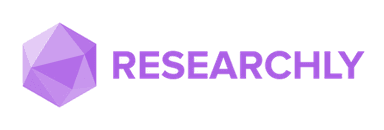Network effects as moat in times of AI
I analyze what makes network effects a strong or weak moat and share a framework to assess defensibility in AI.
Intro
While building Researchly, it's important for me to think about moats—ways to protect us from AI and competitors, including big players like OpenAI.
There are many guides on building moats, such as this on Hacker News, this one one LinkedIn or this one on Forbes. But for me, these guides list different types of moats without explaining why they work. It is always possible to find examples where these moats do not work. Because of this, I needed a framework to assess what makes a moat based on principle, not example. Thus in this posts:
- I look at sources of network effects
- Analyze why network effects are a weak moat
- Analyze how network effects can be a strong moat
- A framework for assessing assets that contribute to network effects
- How business models change for network-based software in times of AI
Definition of network effects
Before talking about network effects, we should define what they are.
Network effects happen when:
- Every new user makes the product better for all users.
- It is hard to build the same network somewhere else. This is important as AI can make copying easier now.
Types of network effects:
- Local: A small group benefits. For example, two coworkers using Notion.
- Global: The whole system improves for everyone. For example, lots of people using an LLM, so it gets better for all.
- Semi-local: Some groups help build value. For example, consultants create Notion tools or offer training to some users.
Sources of network effects:
- Physical: Real people and real connections. More drivers and riders on Uber mean the service works better for everyone.
- Community and Templates: Users build templates or share tips. This makes the platform more useful, like Notion’s big library of templates.
- APIs and Integrations: Connecting to other tools adds value. n8n is much more powerful when linked to other software.
- Data Loops: The more people use the product, the smarter it gets. Instagram’s feed learns from what you like. The best data loops rely on proprietary data.
Why network effects are a weak mot
AI does not change what network effects mean. When more people use a product, it still gets better for everyone. SharePoint is a good example.
SharePoint is for sharing documents and working together. It gets better the more people use it.
- Data and group use: If many people at a company use SharePoint, it’s more useful.
- Community and templates: More SharePoint experts and more ready-made page templates make it easier to use.
- Connections with other tools: SharePoint is even better when it connects well with other Microsoft tools.
But AI makes it easier to switch platforms:
- AI tools help move data from one platform to another. Tools like Attio use AI to move your CRM data easily. MCPs are further eroding the need for integrations.
- AI makes it easy to generate new templates and documents. Notion now even lets you create templates with just a prompt.
Strong network effects can can be created based on proprietary, product-related data
Here’s what we know so far:
- We’ll always need global networks—like consultants, templates, and guides—but maybe less than before.
- Local networks matter most. People are harder to copy than code or features.
- AI helps rivals copy your best-performing network assets
But strong network effects can be created based on proprietary, product-related data:
- If your product uses data only you can get, you can make it better for your users.
- For example, Granola, a note-taking app, could learn each company’s language. It would then feel custom-made for every company. Similar to Palantir’s ontologies.
- Competitors can’t copy that data or the unique experience it gives.
Network effects in times of AI demand new business models
There’s a trade-off with local network effects. Local networks are growing in value. But they also create new risks.
Take Figma as an example. If more people at a company use Figma, it gets more useful. But if Figma adds “Design Agents” powered by AI, fewer designers are needed. That can hurt their network advantage.
So, charging by the number of users (seat-based pricing) might not be the best plan for new companies.
Asses your moat by asking: Can AI replicate, migrate or make my network assets redundant?
Based on the analysis above, here is my framework for assesing moats:
- Can AI replicate the network assets? Example: AI can replicate templates (see Notions’s gen AI template generator).
- Can AI migrate the assets? Example: AI helps migrate data from Hubspot CRM to Attio CRM.
- Does AI destroy the assets? If AI can't do the things above, can AI make them redundantt? For example, if AI can't copy community templates, can your product become so simple you don't even need guides?
To recap
- Global networks are becoming less relevant
- Local networks matter most
- AI helps rivals copy your best-performing network assets
- But proprietary data can be a strong moat
- Network effects in times of AI demand new business models
- Asses your moat by asking: Can AI replicate, migrate or make my network assets redundant?
